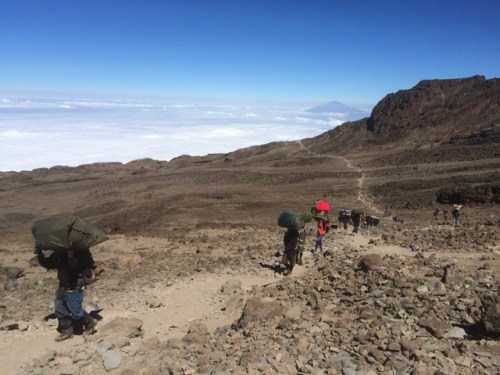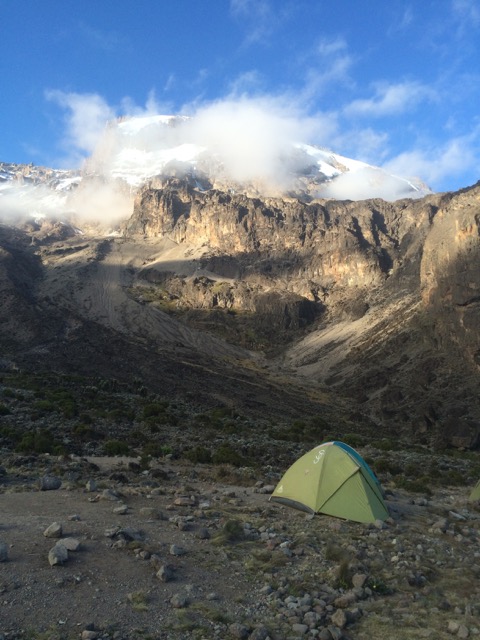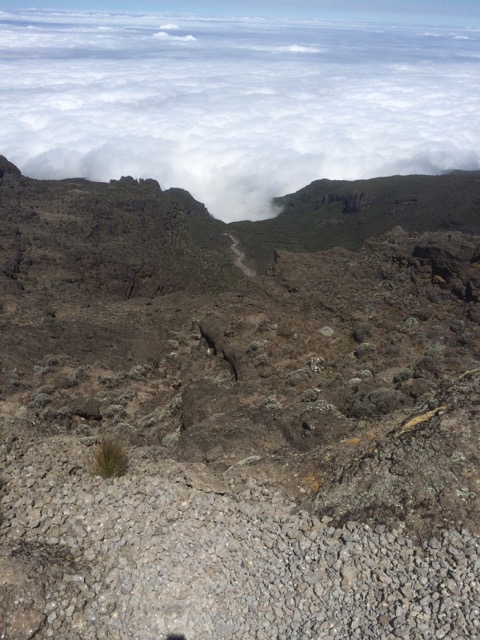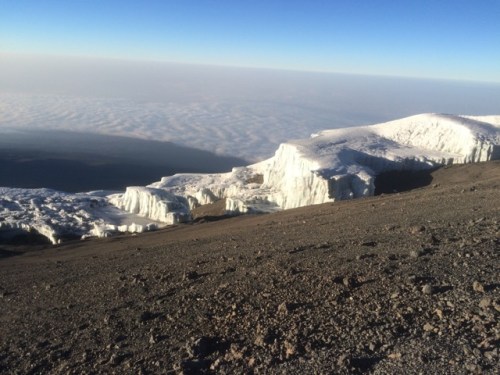The toughest part about climbing Kilimanjaro is getting the time off from work. However, I did misjudge how cold it would be and how my body would adjust to the lack of oxygen and altitude sickness.
My little 6 minute iPhone documentary:
A little about Kilimanjaro. It’s the highest mountain on 4 continents (Africa, Europe, Australia/Oceania, and Antarctica). It’s the highest free standing mountain in the world, meaning it’s not part of a range. When you summit Kili, you start at the bottom. There are plenty of 14K footers in Colorado that you can do in a day if you park near the top. That’s not the case in Africa. It’s a a more “rustic” climb. It’s kind of like climbing the highest mountain in Colorado if you started at sea level in New Orleans. Check out this garbage bin in the nearby town of Arusha:
That said, climbing the Machame Route (whiskey route) on Kilimanjaro is mostly a ton of steep uphill hiking. There are a few rocky parts, but none too technical. The climb is more like a long 8 day slog.
Why is Kilimanjaro famous? Kill is one of the SEVEN SUMMITS, meaning It’s a continental highpoint. It’s crazy high; five thousand feet higher than the highest mountains in Colorado. In fact, the final camp is 1000 feet higher than the tallest mountains in Colorado, and that’s where climbers “sleep” a few hours before summit attempts.
Our climbing party was just me and my brother, Dave. Tanzanian law requires that your climb is guided, so we had a guide and an assistant guide, plus porters to carry supplies. A lot of people mistakenly call them Sherpas, but Sherpa is an ethnicity. They are native Himalayan people that happen to be mountain porters and guides.
Every day was blazing hot, even as we advanced up the mountain. Every night was bone-chillingly cold. The only night that I wasn’t cold was right before summit. I was wearing fleece cycling pants, hiking pants, rain pants, 2 pairs of merino wool socks, a long sleeve t shirt, a cowboy pearl snap shirt, a down puffy jacket, another down puffy jacket, a wool hat, and I was inside a Mountain Hardware expedition-weight down sleeping bag with all of those clothes on. I get pretty cold in the alpine desert.
You are essentially out of the jungle at the end of the first day. The next climate is called “heather.” Next is desert, then glacial mountain peak. There are monkeys and elephants in the jungle, but the only animals you see above the tree line are vultures and mice, and they are all over the mountain, except for the last few thousand icy feet to the top. This is a common view: desert with clouds below your feet.
One of the wildest parts about being on Kilimanjaro is water consumption. If you are taking Diamox (prescription anti-altitidue sickness drug), you will be peeing constantly. The solution is to drink 4 liters of water per day, plus tea or coffee, and soups. In some of the lower camps, there are nearby streams, but at a certain point on the mountain, water is no longer easy to get. The porters carry 5 gallon (20 liter) containers on their heads to bring water up and down the mountain. At the longest stretches, they have to go 4 or 5 mountain miles each way to get the water. Yes, on the uphill part of the hike, the water containers are full.

Also noteworthy was our eating of meat and other perishables high on the mountain. I never saw a refrigerator the whole time I was in Africa (except for in the city of Arusha and at the airport). The porters were not carrying ice or cold packs either. We ate beef, chicken, and wild caught fish that had not ever been refrigerated. The animal was killed, then prepared for cooking or storage. I don’t know if they have a salting technique or other curing process to make it last longer. It was cold at night, but like I said before, the days were blazing hot.
The porters were also responsible for doing med-evacs for injured climbers or climbers who couldn’t continue due to exhaustion. They called these steel cages “stretchers.” It would really suck to be wheeled off the mountain on one of these, especially with an injury. These are the modern versions that have a motorcycle wheel and shocks. The old version was a modified wheelbarrow.
Below you’ll find a few pics from the summit. I originally planned on doing pushups at the top, but by the time I got there I was loopy from speed climbing in the dark, so we just snapped a few photos and left. Still, it was definitely satisfying to reach the the top, or Uhuru Peak.
Then we cruised 10 thousand feet vertically down the mountain in 10 hours to get to Maweka camp. The climb was relatively easy, but the descent had me limping with achilles and knee injuries.
Back under the jungle canopy 1 day later.












Siiiiiick. Congratulations, dude. That would’ve blown hard to have the ol’ pendix blowout on your trip and then have to get carted down on that “stretcher”.
Regardless, congrats!
By: Pearce Grieshaber on September 15, 2015
at 3:23 pm
Wow! As a single mother librarian of two teenagers…who thinks that one day I may be able to take adventures like this once I get my kids out of college and I retire at 60…thanks for sharing! Even if I can’t live adventures as grand as these today—it’s still fun to read about them!
By: Stephanie on September 15, 2015
at 3:29 pm
Fuck yes!
By: 213 on September 15, 2015
at 4:04 pm